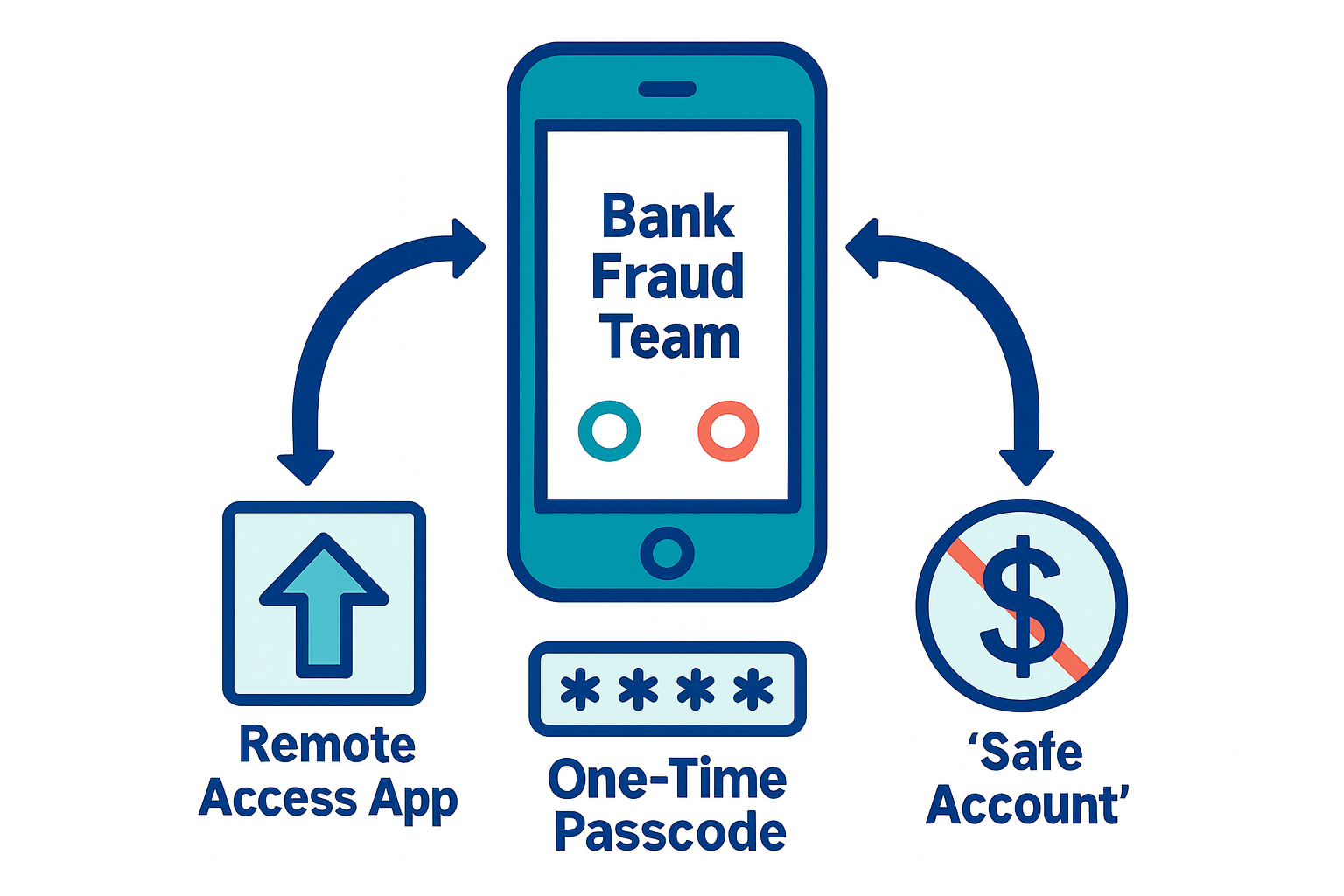U.S. investigation: How bank & police impersonation scams target Americans of 50+ — and how a free cyber helpline is stopping the losses in minutes
Bank & Police impersonation is surging in the U.S. Get a security check now.
Call Now Call (617) 351-8170Across the U.S., scammers are impersonating banks and police—often targeting adults 50+. The good news: a few quick habits can stop them. Here’s what to watch for and who to call.

Margaret, 72, from Ohio, got a call that appeared to be from her bank’s fraud team. The agent knew her surname and partial ZIP code. He asked her to read out a one-time passcode “to cancel a payment.” Within minutes, her online banking was locked and a remote-access app had been installed on her phone. Fortunately, her son spotted it and they called the helpline at (855) 247 9875 (617) 351-8170 for immediate help.
How Today’s Bank/Police Impersonation Scams Work

- Caller ID spoofing: The number looks like your bank or local police switchboard. It appears legitimate.
- Urgency & secrecy: “Don’t hang up. Don’t tell anyone. Your funds are at risk right now.”
- Remote control: They push you to install a “secure support” app (really a spying tool).
- “Safe account” myth: They tell you to move money to an “internal holding account.” There is no such thing.
- Passcode harvesting: They trick you into reading one-time codes meant to protect you.
Got a suspicious call, text or email—or just want a FREE security check? Get help now.
An advisor can check your device, remove risky apps, and secure your accounts in minutes.
Tap for a FREE call Call (617) 351-81705 Red Flags That Mean “Hang Up”
- They ask you to move money “to a safe account.” Real banks never do this.
- They want remote access (AnyDesk, TeamViewer, “Quick Support”).
- They pressure you to read one-time codes or debit card numbers.
- They ask you to keep the call secret or say you’ll “lose everything” if you stop.
- You didn’t initiate the contact—they called or texted you first.

If You Answered — Do This Now
- End the call immediately. Don’t call back on the same line.
- Contact a U.S. cyber advisor: (855) 247 9875 (617) 351-8170 for a free device & account check.
- Remove remote-access apps and unknown profiles; change critical passwords.
- Enable two-factor authentication (2FA) on email and banking.
- Report to your bank and to the FTC at ReportFraud.ftc.gov; you can also file at the FBI’s IC3.gov. We’ll walk you through it.
Why call? Because speed matters. The sooner a specialist locks down your accounts and device, the harder it is for criminals to move or reuse your money and data.
Questions about your cybersecurity? Don’t guess.
Speak to a U.S. cyber advisor for FREE. We’ll confirm what’s real, remove threats, and secure your accounts.
Tap for Free Cybersecurity Advice Call (617) 351-8170

